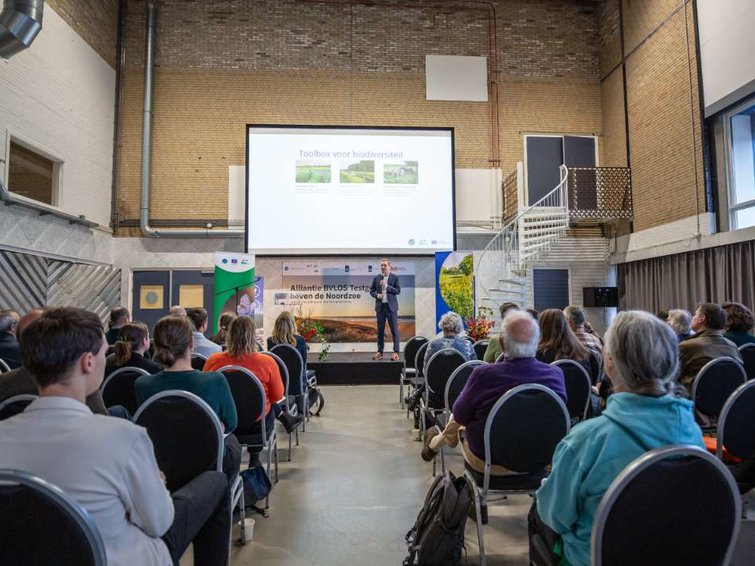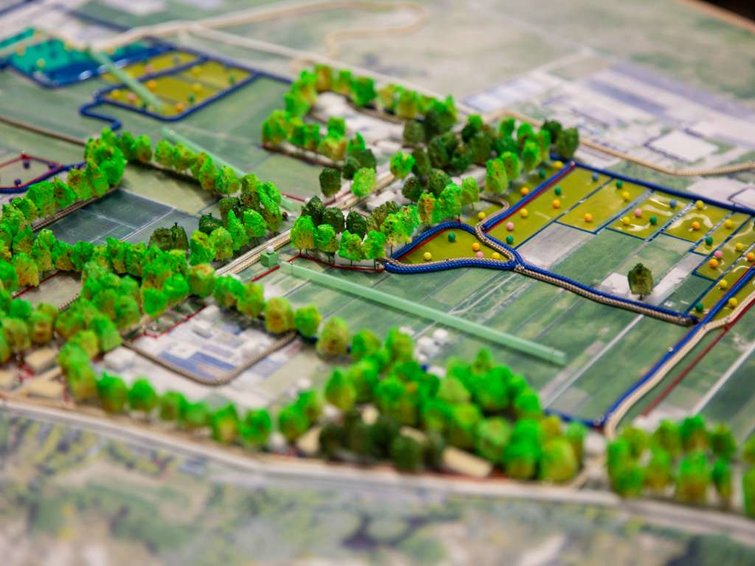LIFE IP GrassBirdHabitats – A new strategy for meadow bird conservation

Photocredits: Pixabay
On November 14th, the webinar ‘Collaboration with farmers – Uniting viable farming practices with nature conservation’, organised by LIFE IP All4Biodiversity and the Delta Plan for Biodiversity Restoration, took place. Seventy interested people joined the international webinar to learn more about this specific topic. Several LIFE IP programmes shared their findings in their search to improve nature quality in and around Natura2000 areas and beyond, whilst providing a viable and practical business model for farmers. Below you can read the report on the presentation about LIFE IP GrassBirdHabitats.
Heinrich Belting, projectmanager, presented LIFE IP GrassBirdHabitats by focusing on preserving habitats for grassland-breeding birds through innovative conservation strategies.
Project objectives and ambition
The LIFE IP GrassBirdHabitats project targets the conservation of grassland-breeding birds such as the curlew, lapwing, redshank, and black-tailed godwit. These species, essential to the Atlantic flyway’s ecosystem, have seen sharp population declines over the years. The project, which runs from 2020 to 2030, seeks to reverse this trend by implementing conservation practices across targeted regions in Germany, including Lower Saxony.
To achieve its objectives, the project aligns with biodiversity strategies and Natura 2000 goals. For example, the target for the lapwing is to increase breeding pairs to 33,000, far above the current population of 13,000 in Lower Saxony. This ambitious goal highlights the scale and urgency of the conservation effort.
Key requirements for meadow bird conservation
Heinrich Belting emphasised that meadow bird conservation only works if we follow certain success parameters, specific habitat conditions:
-
Large areas of wet grassland with high water tables and temporary flooding.
-
High openness, avoiding vertical structures like trees and hedges.
-
Low disturbance from human activity.
-
Nutrient control, with low to medium soil nutrient levels.
-
Carefully timed mowing and grazing, aligned with nesting patterns.
-
Moderate farming intensity for optimal vegetation.
Meeting these conditions is critical but challenging, as many of them conflict with traditional farming needs. Heinrich Belting summarised this starkly: “Meadow birds need everything a farmer doesn’t need.”
Economic challenges and result-based payments
One of the biggest challenges for meadow bird conservation is the economic burden on farmers. The wetter the land, the more birds it attracts, but the costs of maintenance and reduced crop quality make it less profitable for farmers. Heinrich Belting stressed the necessity of a sustainable business model to support conservation efforts.
Therefore, the project developed a result-based payment system, where farmers are compensated based on the number of birds their land supports. This system incentivises farmers to prioritise meadow bird-friendly practices by rewarding them for achieving conservation goals. Payments depend on:
-
Habitat quality, evaluated through criteria like vegetation structure and the presence of fewer than 1,000 soft rushes per hectare.
-
Bird populations, with higher payments for areas supporting more birds.
Farmers’ perspectives and pilot phase
Initial feedback from farmers on this approach has been mixed. While some are hesitant about the changes, others see it as a promising opportunity. Farmers involved in the project, like the Schmedt and Böckermann families, view the initiative as a win-win situation, benefiting both their farms and the birds.
A pilot phase, scheduled for 2025–2028, will test the payment system and refine the approach. The long-term vision is to expand the program across all grassland: 700,000 hectares, using Natura2000 and agro-environmental schemes to fund the initiative.
Question: How do payments work with Natura2000 regulations?
Answer by Heinrich Belting: “Six German states provide Natura2000 payments, Lower Saxony does not yet. The project team is working to secure funding and co-financing, which could be achieved within nine months if political support is secured. These policies have to be made by the ministry and adopted by the European Union. When this is successful, we have to get 20 percent co-financing. Same goes for the agro-environmental schemes: we have to make a new system, new rules, and change them to be able to provide them as a result-based payment. To get it all started is the battle we’re in right now.”
Question: What about adjacent areas to Natura2000?
Answer by Heinrich Belting: “Adjacent areas are part of the long-term strategy, however current capacity limits their inclusion right now. But in the long term it is very clear that they have to be integrated. Part of our strategy is that we have developed strategic plans for the future. In here we defined the co-areas/additional areas outside of Natura2000 where the first goals shall be to develop them for meadow birds as well. So, there’s a very clear plan where we want to concentrate our budget for the future.”
The LIFE IP GrassBirdHabitats project demonstrates an interesting approach to meadow bird conservation, focusing on collaboration with farmers and result-based payments. By aligning conservation goals with financial sustainability, it offers a promising model for reversing population declines among key grassland-breeding birds. As Heinrich Belting concluded, “The farmer becomes a bird-farmer - a new way forward for biodiversity and agriculture.”
Check out the other reports and presentations of this webinar








